A 50-hectare rubber plantation expansion is eyed in a promising Oriental Mindoro community that now earns P65,000 per month from latex that can potentially be processed into higher-valued products.
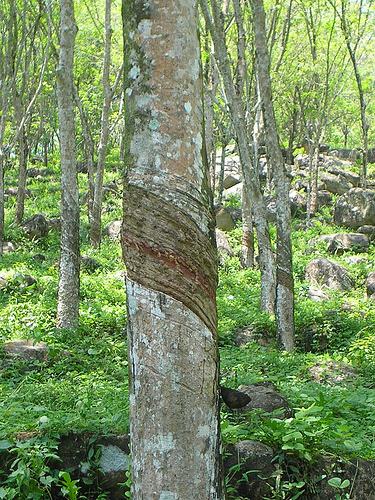
While it is not a traditional rubber area, Oriental Mindoro immediately has 50 hectares that can expand further to 400 hectares for rubber as its livelihood promise is seen by farmer leaders.
Farmer leader-entrepreneur Mitch Miciano just started planting rubber on an almost two-hectare land of his brother in 2005, and subsequently planted on three hectares in his own farm in Sitio Mahabang Parang, Brgy. Malaya, Pinamalayan town.
Now the almost two-hectare area has 700 trees that gives consistent yield and a stable income source of P65,000 per month.
“Except for one to two months of rest, all the months of the year, rubber will give a regular income specially for people here who don’t have a stable source of income,” he said. “The one who taps earns 30 percent of the selling price right away,” said Miciano.
Department of Agriculture-Bureau of Agricultural Research (DA-BAR) Director Nicomedes P. Eleazar said BAR is reviewing its program for rubber which is a top industrial crop under government’s program with its vast potential to give livelihood.
Dr. Eleazar said DA-BAR is organizing the International Rubber Agroforestry Conference in partnership with the International Rubber Research and Development Board (IRRDB) on September 4-6, 2012 in H2O Hotel in Manila.
“We are continuing to assess on how to reach out to farmers and entrepreneurs in the rubber sector which can create many jobs considering the huge growing market for rubber in China and other economically advanced countries,” said Eleazar.
He said BAR is currently funding the implementation of a Research, Development, and Extension project in rubber in Mindoro with the DA-MIMAROPA (Mindoro, Marinduque, Romblon, Palawan) Research Division.
The investment climate for rubber has steadily become attractive. Price doubled from cup lump’s only P30 per kilo when Miciano started planting rubber in 2005 to the present price reaching to P70 per kilo in Mindanao.
“Many people here are encouraged to plant rubber. One investor planted on 8,000 seedlings on seven hectares In due time, we can become like Mindanao,” he said.
But while the potential to create livelihood appears vast in this non-traditional rubber area, its success will largely depend on financing availability. Production cost is at P100,000 in a place where capital is in dearth.
This includes cost for seeds, fertilization, labor for clearing lands, and planting. But this cost excludes the cash needs of farm families for their daily sustenance while waiting for the tree to produce latex.
It takes five years for a budded seedling—a seedling that receives its top stem from a mature, short-gestating, good quality rubber tree—to become ready for latex tapping.
The budded seedling costs P60 per piece, and this price will still increase as it has to be transported from Zamboanga. The investor that brought in 8,000 seedlings to the town spent P170,000 just for transportation, Miciano said.
Government’s assistance should also be in the provision of budded seedlings which has the advantage of yielding latex in just five years, instead of the long 10 years for non-budded seedlings.
Rudy Galang, BAR rubber specialist, said Land Bank has a window specially for rubber production.
Rubber is also one of the industries now being given assistance by the DA through the Agricultural Competitiveness Enhancement Fund, Galang said .
An important input to rubber planting that must also be financed in the long term is farmers’ acquisition of a processing facility that can produce higher-priced semi-finished products.
“Researchers of the University of Southern Mindanao in Kabacan, Cotabato led by Dr. Romulo L. Sena has already developed a village-type processing facility costing P50,000 to P70,000 per unit,” Galang said.
The immediate output of a processing machine, according to Miciano, is in the form of towel-like rubber sheets which are priced almost double that of the cup-lumps.
Miciano said he has also acquired a locally-fabricated device costing only P20,000 to produce such rubber sheets. The machine looks like a roller and is attached to a central power unit in a tractor. However, he has temporarily stopped use of the equipment as it also requires other accompanying devices, dryers in particular, to work with.
“If government can give this to us, it will be a big help, although we haven’t been expecting assistance from the government since we started planting,” he said.
The rubber sheets need air-drying but should not be exposed to sunlight, or these will melt.
Eventually, another need is to ensure that farmers will receive a good price for their produce.
“In Mindanao, traders compete on offering a good price to farmers. Once our volume of production increases, traders will just come readily,” said Miciano.
From the plantation area alone, potential job to be created is one for every hectare. That excludes potential jobs for tappers or the one that extracts rubber latex from the trees, transporters, processing skilled labor, and marketers.
“At the P65 price per kilo now, that means P65,000 peso per month gross income. You cannot earn that from coconut or any other trees,” Galang said.
Rubber price is foreseen to continue to rise in the world market.
“There’s a shortage of supply in the world market because China is getting rich, and car sales is increasing tremendously, and the rubber tires that go with these cars. Even if you plant rubber in all farmlands of the Philippines, it will not be enough to supply the present demand,” said Miciano.
Many foreigners are apparently the ones profiting from trading of rubber in Mindanao.
“These traders are earning because they invested in buying rubber a long time ago. You don’t need government intervention anymore in the sale of rubber in Mindanao. It’s a well established rubber trading system.”
Even traders in Malaysia are reported to be the ones coming into Mindanao to buy the rubber. Although there are negative reports of rubber smuggling out of Mindanao, that is because other nationals see the value of the product.
“Malaysia has become rich because of rubber because they planted it on all their mountains even in slopes, said Miciano, a former bank finance officer who turned to planting rubber.
“It’s good that DA has a thrust to plant rubber. You just shouldn’t be impatient. I myself haven’t been able to notice the five years waiting time before we began harvesting.”
Aside from being an industrial crop, rubber is considered an environment protection crop.
“Its roots grow laterally or sideways. It’s not deep rooted, and its benefit is the top soil is maintained. It is an erosion control tool,” said Miciano.
Rubber’s foliage is also expansive, so it absorbs carbon dioxide significantly, contributing to a reversal in the effects of global warming..
With this prospect, the Agricutural Training Institute (ATI) already has a plan to put up a large-scale technology demonstration farm in Bansud, Oriental Mindoro, said Galang.
There is currently an estimated 150,000 hectares of rubber land in the country.
“Rubber is now very popular in Oriental Mindoro. They’re attracted because of what they saw in Pinamalayan. There are many agrarian reform lands that are planned to be planted with rubber because right now people there just plant kamote (sweet potato), vegetables. Cooperatives will be given planting materials for a total of 40 hectares in Bansud,” said Galang.
Expansion of rubber plantations should enable Philippines to expand its market as the world demand for natural rubber was previously estimated to reach to 12.4 million metric tons (MT) by 2020.
For any inquiries, please call Mr. Mitch Miciano, 0927-7785-426; Mr. Rudy Galang, 0916-200-7331; or 0917-979-1629 for interview arrangements.
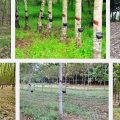
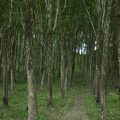


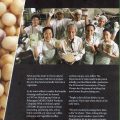
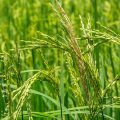

We are selling good quality rubber seedlings for more than 10 years, this is serve as the white gold at your farm so invest now and harvest it continuously later, after several year you can harvest it weekly..
For further question feel free to ask and we will glad to help you! 09212012366 or add me on facebook just type budded rubber.
paki post nalang po ang presyo ng buto po ng rubber tree salamat po
magkano naman po ang oresyo ng buto nyo po
na rubber tree
Hello we have 600 pcs available budded rubber for sale here in oriental mindoro..ready to plant budded rubbers..price is 70 each
i have rubber seedlings for sale at the very low price.. u can contact me at this # 09154482848..
hello
i read an article which tells 100 trees could produce 200kg to 300kg per month.
http://webcache.googleusercontent.com/search?q=cache:http://www.abs-cbnnews.com/global-filipino/01/07/11/seaman%E2%80%99s-wife-stretches-income-rubber-plant-investment
is this true ? i am planning to plant 1000 seedlings or more this year but which i have doubt if the return is great like in this article.
thank you for the reply and help in advance.! cheerS!